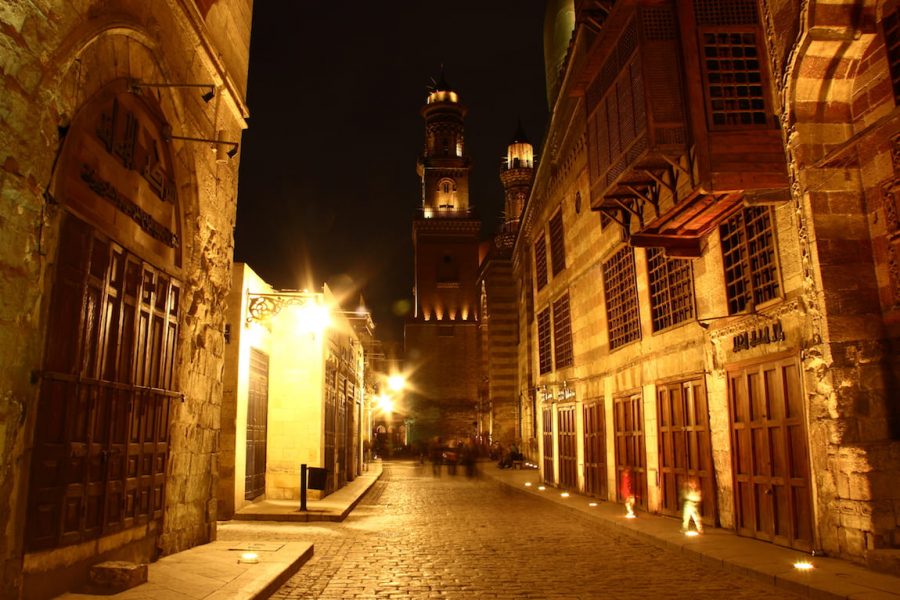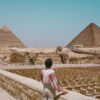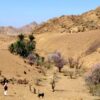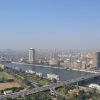While you walk down to Islamic Cairo’s most famous El-Muezz Street, you will come across a grand Ottoman-era Sabil, – Sabil is an Arabic word that stands for a public fountain.
Sabils in Islamic world used to be a popular form of charity by the well-off for anyone who passes by to get a free clean & cold water.
The Sabil of Mohamed Ali, now hosting the Egyptian Textile Museum, tells the history of the textile industry in Egypt from the Pharaonic era until today. Muhammad Ali Pacha, the famous King and modern Egypt builder, erected this Sabil as a tribute to his son, Ismail, who was killed in battle in Sudan. Before this Sabil was converted into a museum, it functioned as a school for orphans and then as a Primary School where many famous Egyptians, including Naguib Mahfouz and Gamal Abdel-Nasser, studied.

It is well known that Muhammad Ali Pacha, the famous King and – the modern Egypt builder – as most Egyptian love to call and who ruled Egypt in the nineteenth century, erected this Sabil as a tribute to his son, Ismail, who was killed in battle in Sudan.
Before this Sabil was converted into a museum, the Sabil functioned as a school for orphans, and then as Primary School, where many Egyptian famous people used to attend.
Naguib Mahfouz, the writer who won Noble and president Gamal Abdel-Nasser were among pupils attended this school, only to name a few.
The museum has 2 floors that include 11 rooms displaying stunning treasures that trace Egypt history through the cloth, shrouds and decorative textiles. A major part of displays here in this stunning museum go back to the Pharaonic era, and visitors will see here what kind of clothes ancient Egyptians really used to wear in their daily life, and can see some bed sheets that scientists assure that they belong to the only woman who ruled Egypt in the ancient times, Queen Hatshepsut.
For those eager to explore more of Cairo’s rich history, consider taking the Grand Islamic Day Tour, which covers numerous significant sites
Another interesting part of the textile museum is that in which visitors can get a closer look to amazing textiles that related to the other world. Like linen shrouds for coffins that decorated with images of various underworld gods.
Moving on into the museum till we reach other rooms which display the Graeco-Roman era, that has the finest examples of textiles from the Coptic era which was the golden era of textiles in Egypt.
If you’re fascinated by Islamic art and history, the Saladin Citadel & Khan El-Khalili Bazaar Cairo tour is a must.
A major part of displays in this section come from Bagawat cemetery in the Kharga oasis in the Western Desert that has many tombs and chapels that some of them are dated back to prehistoric times but all displays are very well-preserved.
Within this era, the Coptic style continues to dominate, but later on and exactly in the Tulunid age fabrics were no longer depict humans but instead were decorated with birds and plants. According to specialists, it seems that Linen was the main material used in this period, as well as dyed wool, with beige and purple being particularly common.
The museum also features displays of textiles from the Islamic era and it goes back to the Arab Conquest in the seventh century. In one of the 11 rooms that museum has people can enjoy seeing Al kiswa, – A unique cloth that used to be made specially to cover the Kaaba in Mecca – dating from the reign of King Farouk (1936-1952). Al Kiswa has draped annually on the 9th day of the month of Dhu al-Hijjah, the day pilgrims leave for the plains of Mount Arafat during the Hajj.
It is well known that each year Egyptians used to manufacture a new kiswa and sent it to Saudi Arabia before Hajj season, an honoured tradition that started in the medieval period and continued until the middle of 20th,
Explore more of Cairo’s wonders with the Cairo Private Day Tours and Cairo Small Group Day Tours, perfect for delving deeper into the city’s rich heritage.
Your Travel Story Awaits
With Travel2Egypt, every itinerary is a chapter in your personal book of adventures, each experience a narrative waiting to unfold. We are here to guide you through Egypt’s most sacred spaces and hidden corners, crafting a journey that resonates with your spirit of exploration.
- Visit our comprehensive travel guide to inspire your next Egyptian adventure.
- Connect with us to tailor your journey to the rhythms of the Nile and the whispers of the desert wind.
“Let us be the compass that guides you to the heart of Egypt, where every grain of sand has a story, and every moment is a treasure waiting to be discovered.”
Join us at Travel2Egypt.org, where your journey is our canvas, and together, we create the masterpiece of your dreams. Contact us to begin your timeless voyage through the Land of the Pharaohs.
Frequently Asked Questions About Egyptian Textiles Museum
What is the Egyptian Textiles Museum?
Where is the museum located?
What are the museum’s opening hours?
What is special about the museum’s building?
Why did Mohamed Ali Pacha build this Sabil?
Which famous Egyptians studied here before it became a museum?
What kind of artifacts can visitors expect to see?
What is the significance of the Kaaba Kiswa displayed in the museum?
Are there any unique funerary textiles on display?
How many rooms does the museum have?
What materials were used in ancient Egyptian textiles?
Is photography allowed inside the museum?
How much is the entrance fee?
How long does a visit to the museum typically take?
Are guided tours available?

Faris is the passionate founder of Travel2Egypt, deeply connected to Aswan’s essence. He aims to share the true heart of Egypt through its rich history, vibrant culture, and the warmth of its people. Join Faris to experience the magic of Aswan beyond the usual tourist paths.





